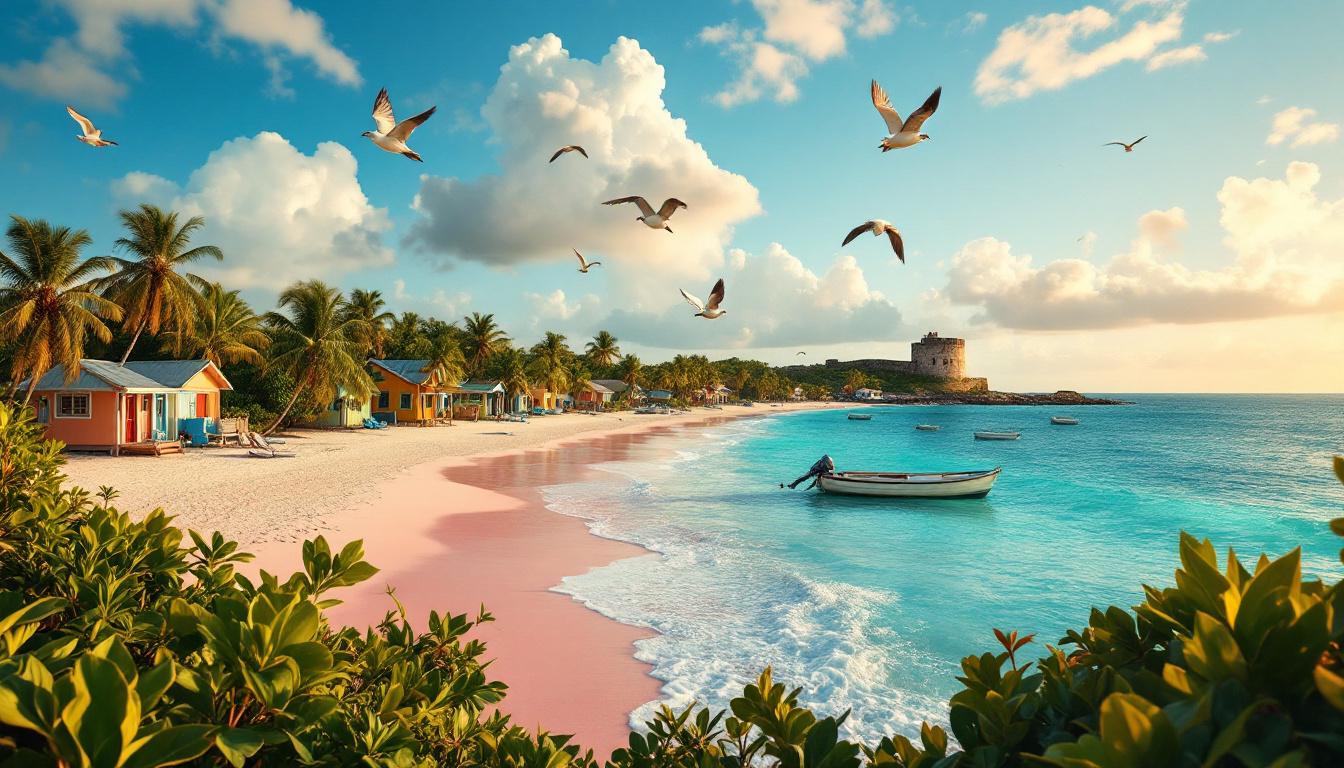On the remote Caribbean island of Barbuda, where just 1,700 residents call this pristine paradise home, there’s a quiet tension brewing. While tourists flock to overcrowded Antigua next door, the proud Barbudans carefully guard their slice of untouched Caribbean heaven from the resort chains circling like hungry sharks.
This isn’t just about protecting beaches—though Barbuda’s 17 miles of pristine pink sand remain gloriously empty even in peak season. The locals understand something that mass tourism destroys: authentic Caribbean culture thrives in places where community comes before profit.
After witnessing what unchecked development did to neighboring islands, Barbuda’s tight-knit community has made a collective decision. They welcome respectful travelers, but they’re not rolling out red carpets for mega-resorts that would transform their homeland into another generic tropical playground.
The historic treasure locals fiercely protect
Caribbean’s oldest military fortress stands guard
At River Landing, the weathered stones of the Caribbean’s oldest Martello Tower have watched over Barbuda since the 1700s. Local fishing captain Winston Francis explains why this matters: “That tower survived hurricanes, pirates, and colonial wars. We’re not letting it become a backdrop for Instagram selfies and wedding packages.”
Community-controlled access preserves authenticity
Unlike Antigua’s commercialized Nelson’s Dockyard, Barbuda’s historic sites remain community-managed. Local guides share stories passed down through generations, not rehearsed scripts written by tourism boards. This means visitors experience genuine Caribbean history, but only in small, respectful groups.
The natural wonder that drives protection efforts
World’s largest frigate bird colony needs sanctuary
At Codrington Lagoon, over 5,000 magnificent frigate birds nest in the largest colony on Earth. Marine biologist Dr. Shanna Challenger works with locals to limit visitor numbers: “Mass tourism would destroy this ecosystem in a single season. The Barbudans understand conservation better than any government policy.”
Pristine beaches remain undeveloped by choice
While St. Lucia crams resorts along every coastline, Barbuda’s endless beaches stretch empty and wild. The famous Princess Diana Beach sees maybe 20 visitors daily—a conscious choice that keeps sand dunes intact and sea turtle nesting sites undisturbed.
Economic realities behind the resistance
Hurricane Irma taught hard lessons about sustainability
When Hurricane Irma devastated Barbuda in 2017, forcing complete evacuation, locals learned that resilient communities matter more than tourist revenue. Rebuilding focused on sustainable practices, not quick tourism profits that leave communities vulnerable.
Small-scale tourism provides steady income
Barbuda’s 15 guesthouses and eco-lodges employ local families directly, unlike resort chains that import staff and export profits. Fisherman-turned-guide Lennox Challenger notes: “We make good living without selling our souls. Big hotels would mean minimum wage jobs for maximum environmental damage.”
How respectful travelers can still experience paradise
Ferry access from Antigua requires planning
The Barbuda Express runs three times weekly from Antigua, carrying maximum 150 passengers. This natural bottleneck prevents day-trip crowds while allowing dedicated travelers to experience authentic Caribbean island life. Book ferry tickets well in advance—locals get priority.
Local accommodations offer authentic experiences
Stay at family-run places like Nedd’s Guest House in Codrington village, where breakfast conversations reveal island secrets no guidebook mentions. These intimate accommodations directly benefit families who’ve called Barbuda home for generations, ensuring tourism revenue stays local.
Planning your respectful visit to Barbuda
What makes a visit worthwhile?
Can you visit Barbuda without contributing to overtourism? Absolutely—choose locally-owned accommodations, hire community guides, and respect environmental guidelines.
How do you reach this protected paradise?
Fly to Antigua, then take the ferry to Barbuda three times weekly. The 90-minute journey across turquoise waters builds anticipation while respecting island carrying capacity.
What should responsible travelers expect?
Expect pristine nature, genuine warmth from locals proud of their home, and the rare Caribbean experience of beaches shared with frigate birds rather than resort guests.
Barbuda’s residents aren’t anti-tourism—they’re pro-community. By choosing this carefully protected paradise, you’re supporting a Caribbean island that proves sustainable tourism and authentic culture can coexist beautifully.
Visit soon, but visit responsibly. Some Caribbean treasures are worth protecting, and Barbuda’s 1,700 guardians are showing the world exactly how it’s done.
